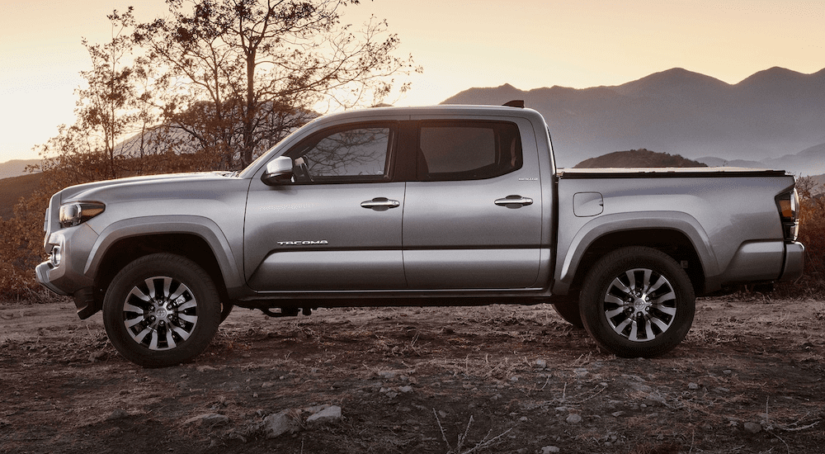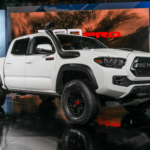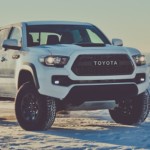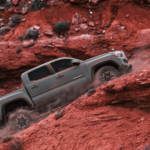From the L.A. Auto Show in December to the Geneva Auto Show in March, it’s easy to appreciate this time of year for the array of current auto news being served up. From staggering insights into emerging technologies to intoxicating glimpses at intriguing concepts there is no shortage of topics deserving of further exploration. But some of the most tangibly exciting headlines come in the form of redesigns and next-gen offerings, preparing for release.
For example, let’s talk about the 2020 Toyota Tacoma. With the expectation that the new Tacoma will be unveiled at the Chicago Auto Show, on Thursday February 7th. By the time this article is published, we should have a far more fleshed-out understanding of the redesigned Tacoma courtesy of the C.A.S.; but at the time this article is being composed, we’re still waiting patiently(?) in a pre-show holding pattern.
Needless to say, Toyota’s decision to tease the release with an artistic shot of the midsize truck shadowed and obscured by both mountain and sunset was less rewarding than we might have liked. Leaving plenty to the imagination, we threw ourselves into a hunt for what was new, and what our expectations should be.
But let’s not get ahead of ourselves. For those who might not be as familiar with the Tacoma, let’s offer a little refresher in the hopes of offering some context.
Meet the Tacoma
At the risk of dating myself, I was a high school senior when the fresh-faced Tacoma was first introduced as a mid-year offering for the 1995 model year. But the first decade that made up the Tacoma’s first-generation, saw the popular truck classified as a compact pickup. Diminutive in both size and ratings, the early Tacoma’s performance numbers maxed out at 190hp and 220 lb-ft of torque courtesy of a 3.4-liter V6 making it – well – relatively unimpressive.
Granted, that might be an unfair statement made by 2019 standards. After all, we now find ourselves stranded inside the sandstorm of horsepower battles, captivated by a segment of super-trucks finding it all-too-easily to reach the staggering $100K price point. So what was it about the Tacoma that really set it apart?
Most of its specialty appeal came as a result of the 2nd-gen TRD packages. Beginning with Sport and Off-Road, and moving on to such trim-topping editions as the TRD Extreme, Pro and Baja – the Tacoma is an indisputable introduction to the Hi-Po’d off-roaders that have been stealing so much of the spotlight in recent months. But in the Tacoma’s second-gen, it was reclassified to the midsize segment where it finds its home to this day. And even those the Tacoma had been a consistent player/performer for two decades, the best (in many opinions, including my own) was yet to come.
Enter the third-gen Tacoma in 2015-16, where Toyota’s midsize offering seemed to hit its stride. The beefed-up Tacoma enjoyed a more masculine aesthetic while borrowing certain design strengths from the likes of the Tundra and 4Runner. With increased rigidity thanks to the inclusion of high-strength steel, the Tacoma (now available in both Access and Double Cab, as well as Short and Long Bed configuration) felt more like a “true” truck to past critics. This perception was further bolstered by a powertrain capable of up to 278hp and 265 lb-ft of torque, with a properly-equipped Tacoma towing up to 6,800 LBS.
Like most trucks of the time, the recent Tacomas have enjoyed the inclusion of available technologies as well as the upscaling of its interior options. More powerful, more compelling in terms of design and better-equipped than ever, it felt like the Tacoma had finally reached an iconic realization. Factor in 2017’s introduction of the TRD Pro edition for the Hi-Po crowd, and its easy to appreciate the overdue validation that the Tacoma had finally received.
Needless to say, the relatively rapid nature of this newest overhaul (for 2020) managed to catch some by surprise.
Back to 2020
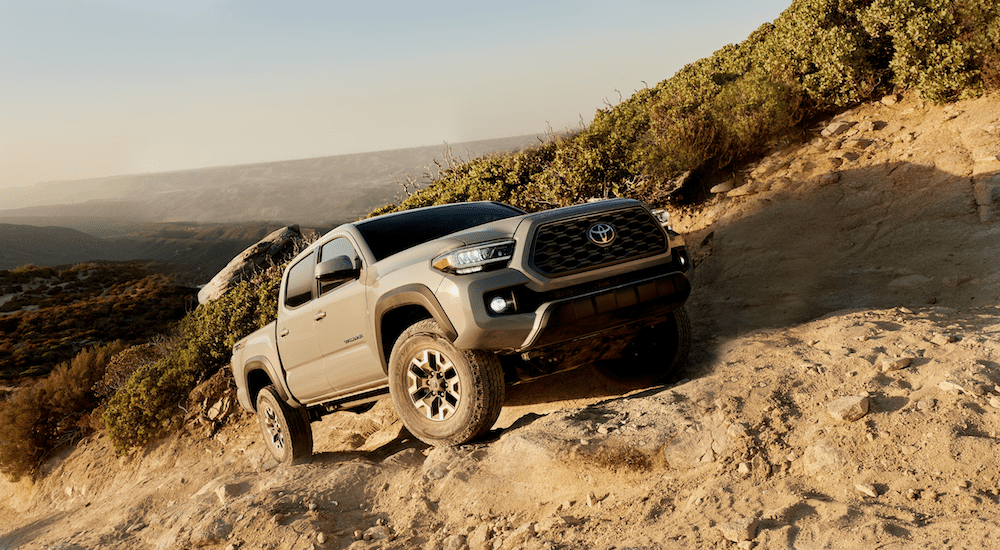
Remember that teaser image we referred to at the beginning of this article? While both shadows and lighting proved somewhat restrictive, silencing our hopes of a full reveal, it appears that exterior changes from the current model year might be minimal. While our opinion is only that (an opinion) this doesn’t really disappoint us. As mentioned, we are of the school of thought that the most recent design of the Tacoma is pretty damn successful. And while we expect the full reveal to present some minor tweaks and updates, we’re okay if an “ain’t broke, don’t fix it” mentality is employed.
What really intrigues us is the discussion of whether or not the same mindset will be applied to the powertrain. Currently, the Tacoma comes with either a 2.7-liter four-cylinder paired to a manual transmission, or a 3.5-liter V6 paired with a six-speed automatic. Capable (as noted above) of up to 278hp and 265 lb-ft of torque, with a max towing of 6,800 LBS the Tacoma is capable. And while we’re perfectly accepting of any jump in performance, where would one expect to go with a midsize pickup? In fact, how far would you want to go with a midsize pickup?
So What Do We Know?
Bottom-line, not much at this point. And frankly, it’s killing us just a little bit. Maybe we feel a little protective of the Tacoma because it’s come so far from its humble beginnings. Having earned legitimate credibility, and a value-added design, it’s a far cry from the Tacoma that I first met all those years ago. Just as I’ve seen more than two decades (and quite a few belt loops) pass me by, the Tacoma has endured, thriving through continual evolution. We might not have achieved much here, in the hopes of honing in on the 2020 Tacoma’s features – but we wanted to capture a sense of our genuine anticipation, pending next week’s reveal. Inevitably, we’ll follow up on this once the C.A.S. reveal has taken place. At that point, we might have learned that our speculation was very, very wrong. Only time will tell if Toyota had any cleverly-masked surprises up their sleeves.
Understanding that all of us will have been introduced to the new Tacoma by the time this hits publishing, we want to know your thoughts on the reveal. What did Toyota get right, and what do you wish they had done differently? Be sure to let us know!
